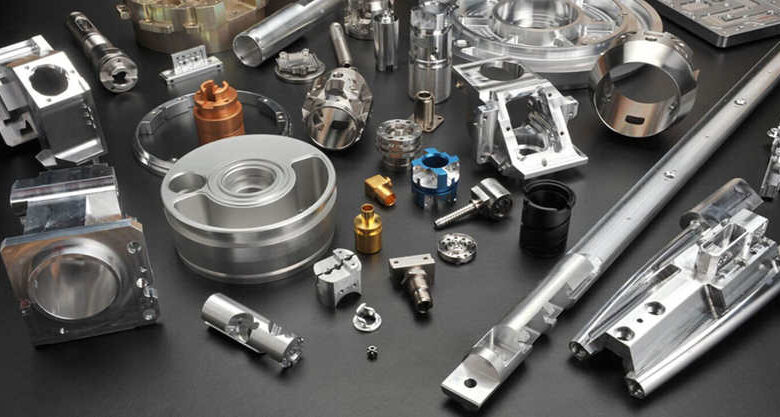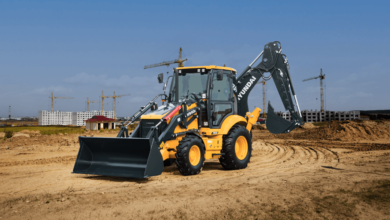Will CNC Operator Affect the CNC Machined Parts Results

Have you ever received faulty or unusable machined parts from a manufacturer despite their promises of using quality equipment and modern facilities? It happens because the manufacturing of high-quality products depends on not only using advanced machines but also employing skilled operators.
The role of a CNC operator is not limited to just running the machine. Their expertise and attention to detail directly influence precision, consistency, and overall output. The quality of a CNC machined part can be ruined by an untrained or poorly-skilled operator who lacks the expertise needed to interpret designs and run complex machining processes properly.
Keep reading to learn about how the skill of a CNC operator affects CNC machined parts results and the things that can go wrong during a machining operation because of that incompetence. We’ll also discuss the solutions to those problems.
Will a CNC Operator Affect the CNC Machined Parts Results?
The role of a CNC operator is crucial in determining the quality of CNC machined parts results. A skilled operator knows how to choose the right tools and set up the machine correctly. This expertise helps produce parts with the correct measurements.
When an operator makes a mistake, the results can be less than ideal. For instance, if they forget to reset the settings when switching parts, it can lead to serious mishaps. This kind of oversight can ruin not just the product but also the machine itself.
CNC work often involves repetitive tasks. This means that operators need to stay focused and pay close attention to detail. Even small errors can multiply over time, leading to a batch of defective parts. Skilled operators continuously check their tools for wear and tear because dull tools can throw off measurements, resulting in parts that don’t meet specifications.
Moreover, experienced operators are adept at making adjustments on the fly. If they notice something isn’t quite right, they can troubleshoot the issue before it becomes a bigger problem. This ability to adapt is key in a fast-paced environment where precision matters.
Common Bad Operation During CNC Machining (Solutions Attached)
Let’s discuss the common issues that can happen due to an operator’s lack of expertise:
1. Code Errors
CNC machines operate based on complex codes, which tells them exactly what to do. Unfortunately, programming errors are a frequent problem, particularly for less experienced operators. These mistakes often occur when operators input incorrect information, misunderstand the function of G and M codes, or simply make small typing errors, like confusing a letter with a number.
For instance, if an operator mistakenly types a zero instead of the letter “O,” it can lead to significant issues. Even minor mistakes in punctuation, such as an incorrectly placed comma, can derail an entire operation.
These errors are often difficult to notice, especially if the operator is inexperienced and does not know what to look for. As a result, time and materials can be wasted, and machines can suffer damage—all of which can be costly.
Solution:
A company should prioritize the training for CNC operators to minimize the frequency of code errors. Providing thorough training helps them understand the programming nuances and the importance of each code.
Pairing new operators with experienced mentors can also enhance their learning experience, helping them grasp the necessary skills faster.
Moreover, teaching operators to take their time when programming could help. Encouraging them to double-check their work and review their code regularly can significantly reduce the chances of making mistakes.
2. Performance Deterioration
CNC machines are intricate devices with many moving parts. They need regular maintenance to function correctly and maintain high-quality output. When operators don’t prioritize maintenance, even small issues can escalate into major problems. Dust and debris can accumulate, leading to machine jams or permanent damage.
Signs of neglect include material shifting during cutting, unusual noises, and overheating. Often, minor inaccuracies in the finished product signal that maintenance is overdue. For example, if parts don’t meet quality standards, it might be due to a dirty machine or insufficient lubrication. These issues can create significant downtime and lead to expensive repairs.
Solution:
Creating a preventive maintenance program is essential for keeping CNC machines in top shape. A detailed maintenance schedule helps ensure that operators regularly clean and check the machines. Keeping a log of repairs and inspections can provide valuable insights into each machine’s history, making it easier to spot recurring issues.
Operators should be trained to perform routine inspections. They need to check coolant levels and look for signs of wear and tear on parts. Only being proactive will help them catch potential problems before they escalate.
3. Vibration or Chatter
Vibration, or chatter, can be a sneaky issue. It often starts subtly, making it hard for inexperienced operators to notice. When a CNC machine vibrates, it can lead to several problems:
- It shortens the lifespan of the cutting tools. This means operators will have to replace them more often, which can get expensive.
- Vibrations can affect the quality of the finished parts. They can create poor surface finishes and make the machine less efficient.
One reason for these vibrations is misalignment. If the machine parts aren’t properly aligned, they can vibrate during operation. Loose components or worn-out bearings can also contribute. Unfortunately, these issues may exist long before they become obvious to the operator and affect the CNC machined parts results.
Solution:
The operator should use tools that measure the vibrations of the machine. By analyzing this data, it’s possible to identify issues like bearing failures or bent shafts. If an operator suspects vibrations, it’s best to consult a professional. They can pinpoint the problem and recommend repairs. Regular maintenance checks can also help catch these issues before they worsen.
4. Incorrect Feed and Speed Rate
Another common problem is incorrect feed and speed rates. New operators often struggle with setting these parameters correctly.
If the feed rate is too slow, the cutter spends too much time on one spot. This can lead to scarring on the material, which ruins the surface finish. Not to mention, the tool may get dull faster, and excess heat can form, potentially burning the material.
On the other hand, if the feed rate is too fast, the tool can bounce around instead of making clean cuts. This excess deflection can decrease the tool’s lifespan and affect the quality of the workpiece.
Solution:
Calculating the optimal feed and speed is a complex task. Operators need to consider various factors like cutter type, cut width, and machine power. Using charts or calculators specifically designed for CNC operations can guide operators in selecting the correct feed and speed rates.
Also, a company can pair up their experienced workers with new operators to give them practical training. The mentorship will help the new workers to learn faster.
5. Chuck Fixture Clamping Problems
Another mistake that inexperienced CNC operators do is failing to clamp the workpiece correctly, which leads to poor CNC machined parts results. If a chuck does not grip the workpiece firmly, several things can go wrong.
A common issue is misaligned parts that cause defects. Chatter is another problem, which creates vibrations during cutting. This affects the surface finish and may damage both the tool and the workpiece. In severe cases, improperly clamped parts can lead to accidents, risking the safety of the operator.
Solution:
The operator must be skilled enough to ensure proper clamping techniques to avoid this problem. They should also have expertise in operating a multi-axis machining center if the project requires machining on all five sides. Options like a 3+2 or 4+1 axis configuration can significantly improve efficiency. For highly complex shapes, full 5-axis capabilities are essential. So, a CNC machine shop has to either hire expert machinists or give their workers proper training.
6. Inadequate Power Supply
An inexperienced operator may not also notice the underperformance of a machine due to inadequate power supply. Each CNC machine requires a specific voltage to operate correctly. If the voltage is too low, the machine may struggle to produce the desired results. This can lead to longer processing times, increased wear on tools, and potential damage to workpieces. And too much power is also a bad thing as it can cause overheating or even complete machine failure.
Solution:
The operator always needs to check the specifications of the machine. They have to check the input voltage and monitor the output to ensure the machine receives the power it needs. Regular maintenance checks can also help catch any power supply issues before they escalate.
7. Improper Tools or Settings
When a CNC operator lacks experience, they might choose the wrong cutting tools or set incorrect parameters. This misstep can severely affect the CNC machined parts results. For instance, using a tool that isn’t meant for the specific job can lead to rough edges, cutter marks, and even burn marks on the material. These imperfections not only ruin the aesthetic appeal but can also affect how well the part functions.
Moreover, using dull or inappropriate tools repeatedly can cause excessive wear. This wear can lead to even more mistakes, creating a vicious cycle of poor quality.
Solution:
The operator needs to calibrate the machine regularly to tackle these issues. By following the manufacturer’s guidelines and having a trained expert inspect the machine, minor problems can be caught early.
If a shop offers custom CNC machining service, their operators should invest time in learning about different tools. Knowing which tool is best for a specific machining task is important for manufacturing products with complex designs.
Conclusion
The skill of a CNC operator plays a major role in determining the quality of CNC machined parts. A skilled operator can produce parts that are precise, consistent, and free of defects. On the other hand, an inexperienced operator can make mistakes that can lead to poor quality, wasted materials, and machine damage. Investing in training and providing proper support to the operators is crucial for any manufacturing company that wants to supply high-quality parts to their customers.
Is your CNC machining project suffering from quality issues? Let Zintilon’s skilled operators solve your problems. With our expertise and precision, we’ll deliver the high-quality machining parts you need. Contact us to learn more about our service.
Keep an eye for more news & updates on Tech Pro Magazine!





